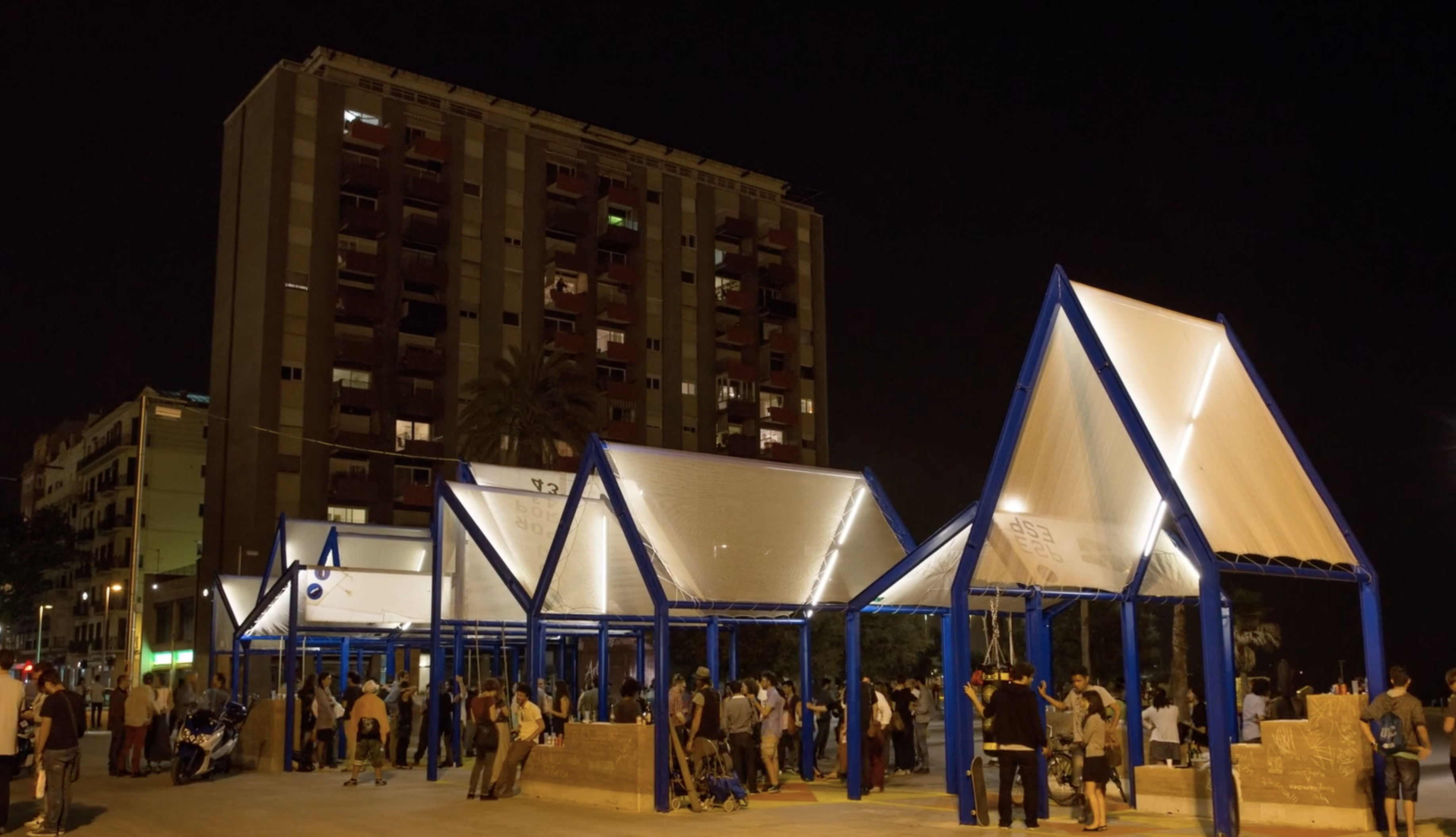?
Collaborative work, works! See some evidence…
?
Collaborative work, works! See some evidence…

Collaborative work, works!
Collaborative work works not only in theory but in practice too. More precisely, social intervention in the built environment is only possible through collaborative strategies, a shared social commitment and the understanding of personal experiences.
Interdisciplinary design practice Urban-Think Tank is committed to a high level of research and design in social architecture and urban planning. They deliver practical solutions through the collaborative skills of architects, civil engineers, environmental planners, community leaders, researchers and artists. All the while, developing approaches to the social role of professional pedagogy. U-TT’s Xarranca Pavillion is an exemplar of their principles in practice. In collaboration with ESARQ-UIC (Barcelona School of Architecture) and the Enric Miralles Foundation, the pavilion was directed by a participatory ethos. Drawing from the existing collective knowledge of the neighbourhood, students from ESARQ-UIC informed the design process through in-depth site analysis, public intervention studies, and community engagement. In turn, retaining the complex history that once was. As such, local social collectives and students helped to build the Pavilion, whilst materials were sourced directly from local craftworkers, fishermen, and sailors. The temporary structure creates promotes cultural exchange and social activity, with references to the children’s game hopscotch.
‘…we reinforce our broader vision of an alternative framework for reading and acting within the city, highlighting social and cultural diversity while remaining committed to the idea of design as a collaborative and participatory act.’ – Urban-Think Tank.
It’s only when we understand the usefulness of personal experiences, that we can produce historically enriched and purposeful projects for communities. Collaborative methods work to sustain social impact. It is more valuable to work with local communities directly than it is to pull information about them through online research. Architects, planners and designers actively working with communities and students like Urban-Think Tank have, will undoubtedly contribute to shaping a new generation of architects capable of challenging the existing inequalities within our built environment. Rather than ticking the ‘consultation’ box, we as designers need to be led by a participatory ethos, steered by the community than us steering them.
ftwork believes in collaborative work making a collective and social change. Similarly, our online platform Collaborative Change is dedicated to celebrating and sharing collaborative projects all over the world. As architect Alfredo Brillembourg of Urban-Think Tank said perfectly himself ‘you can accomplish more and better things as a collective’.
By Sarah Osei
credits:
Image: Fundació Enric Miralles